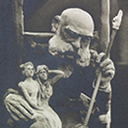0260 Vienna as a Sculptural Centre in the Long 19th Century
Current Research on Sculpture in Central Europe
Identifiers (Article)
Abstract
The Vienna Art Academy has always attracted budding artists from all over the Empire, especially after the reform in 1872. Similarly, the School of Arts and Crafts in Vienna played an important role from its foundation in 1867. It served as a model for such institutions in the crown lands, including Zagreb, Budapest and Prague. At the same time, the project of the Vienna Ringstraße, in which many professors from the academy were involved, offered the prospect of commissions. Still, the networks of sculptors in the capital and the crown lands during these decades have not been widely explored. This is not a matter of purely art-historical questions; rather, the national question plays an important role. An international group of researchers is now tackling these connections, a century after the collapse of the Austro-Hungarian Empire and decades after the partial division of Europe by the Iron Curtain.
Statistics


License

This work is licensed under a Creative Commons Attribution-NonCommercial-NoDerivatives 4.0 International License.



